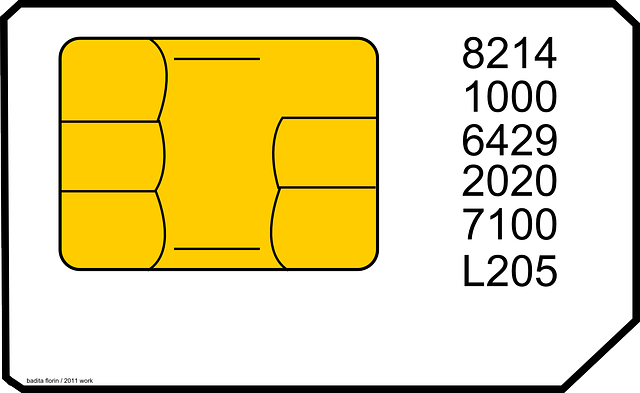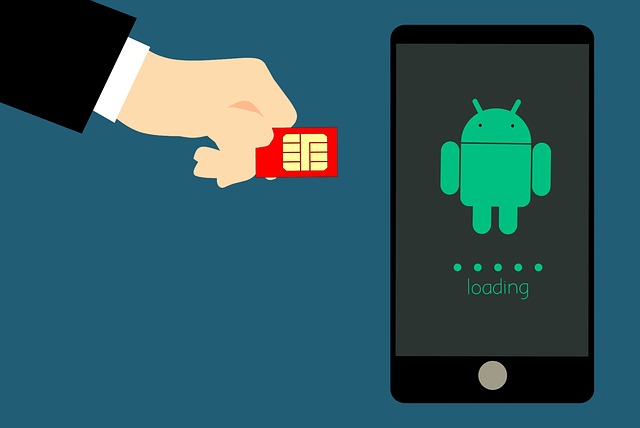A key aspect of the Internet of Things (IoT) is how we can connect the different devices and sensors, and cellular connections via IoT SIM cards are one of the most popular IoT connections due to their scalability.
With how IoT is becoming more prominent in recent years – not only in consumer tech but also in the B2B environment, the demands for IoT SIM cards are also getting bigger.
Here, we will discuss the advantages of using IoT SIM cards to connect your IoT devices and sensors compared to other IoT networks.

IoT SIM Cards VS Other IoT Network Connections
Although there are now various ways to connect IoT devices, we can generally differentiate IoT network connectivity with three key factors:
- Power consumption (since many IoT devices and sensors are battery-powered)
- Bandwidth capabilities
- Coverage range, both in a sense of how far a sensor can connect to another device and the size of the whole network.
With these three factors, the cellular IoS network via IoT SIM card uses high power consumption, but also offers the biggest, most scalable coverage range and also the highest potential bandwidth.
WiFi or Bluetooth, for example, uses a comparatively lower power consumption but has less coverage range. However, WiFi does offer a higher bandwidth compared to an IoT SIM card.
Low-power network alternatives like the LPWAN (Low-Power Wide-Area Network), for example, Sigfox and LoRa, cover a wide coverage area while using very little power, but at the same time only offer a low bandwidth capacity.
So, the cellular IoT connection is the best choice if you want a big coverage range. Technically, with IoT SIM cards, you can expand your IoT network into a global scale, if you desire so.
About IoT SIM Cards
IoT SIM cards are also known as M2M (Machine to Machine) SIM cards, and as the name suggests, it is a special type of SIM card used to connect between two machines/devices so the two or more devices can communicate with each other.
A key feature of the IoT SIM cards, when compared to standard SIM cards (like the one in your smartphone), is the data plan. With many different devices connected in the network, businesses looking to implement IoT automation might require multiple IoT SIM cards which can reach hundreds or even thousands in a massive system.
So, an aggregated data plan is very important to reduce the risk of incurring charges when one or more devices are overusing data. When one sensor overuses data, while another underuses data, both will be aggregated into the same plan.
Truphone, for example, offers an aggregated data plan for IoT SIM cards where you can manage connectivity for thousands of devices with a single data plan and via a single dashboard.
Different Types of Cellular IoT Connections
When considering different IoT cellular data plans, it’s important to note that there are several different types of IoT connections, each of them might better fit a certain use case compared to the others. They are:
. GPRS 2G/3G:
while 3G and especially 2G networks are now obsolete in cell phone usage, they are still widely used in IoT settings for devices that require relatively small bandwidth requirements like vending machines and parking meters. They are obviously more affordable than faster data plans, but you can’t send/receive videos as well as big files.
. LTE Cat-0:
a specialized version of a 4G/LTE network for IoT use, the Cat-0 LTE is optimized for cost by eliminating the high data rate requirements of standard LTE.

. LTE Cat-M:
an upgraded version of the cat-0 LTE, Cat-M (or LTE Cat-M), is better than the Cat-0 in IoT application due to reduced costs and power consumption. The Cat-M limits the maximum system bandwidth to only 1.4 MHz (it is 20 MHz for Cat-0 LTE).
. NB-IoT:
another upgrade of the Cat-M LTE, so it’s also called Cat-M2. However, it utilizes DSSS modulation instead of LTE radios, so it’s technically not an LTE network. NB-IoT (Narrowband IoT) has a long coverage range, consumes low power, and is very reliable. However, it does have some latency and has a higher upfront cost. Since it’s not on LTE, it’s also immune to interference from other connectivity. In IoT applications, NB-IoT is rapidly growing in popularity.
Your IoT SIM data plan might support different types of connections. Truphone’s IoT data plan, for example, supports 2G, 3G, and LTE.
Advantages Of IoT SIM Cards
To summarize, here are the key advantages of using IoT SIM cards over the other IoT network connections:
1. Coverage Range
The biggest advantage of IoT cellular connectivity compared to other alternatives like WiFi and LPWAN is the coverage range of the cellular network.
Compare the size of your home WiFi network to the surrounding cellular network in your area. Obviously, the cellular network is much bigger. Since the IoT devices rely a lot on the internet connection, then obviously coverage range is very important.
With an IoT SIM card, we can enable devices to send and receive data from anywhere with cellular coverage (which is, virtually everywhere in the world). So, with a cellular IoT network, we can scale the IoT implementation worldwide without needing to invest in network infrastructure.
2. Affordable Upfront Investment
Since you don’t build your own infrastructure but instead “rent” the cellular network, the upfront investment is smaller than, for example, building your WiFi network. Investing in IoT SIM cards allow us to power our project without the limitations of the network infrastructure.
When you want to expand your network, you don’t have to pay to build the cell towers, but you simply need to find a plan/provider that already covers the new area. Meaning, it’s much easier to scale your IoT network depending on your needs.

3. Global scalability
Due to the advantages above, IoT SIM cards are, at the moment, the only way to successfully power a nationwide and even global-size IoT project and a smart city. Again, this allows businesses to solely think about their objectives without having to worry about the project’s feasibility.
With this advantage, we can also take our project to virtually any country. There are also IoT plans that support international coverage, like Truphone’s IoT plan that is available in 48 countries. This way, we don’t have to sign with various network providers and eliminate switching costs.
End Words
The main advantages of using IoT SIM cards over other options for IoT network connections are its scalability with the global cellular coverage and the relatively lower upfront investment compared to other plans.
If you plan to scale your IoT project, then a cellular connection is your best bet, and you might want to consider Truphone For Things for your IoT wireless connection solution. Truphone For Things offers the most versatile ways to connect your devices/sensors and to control each device reliably with an intuitive, easy to use management platform.
